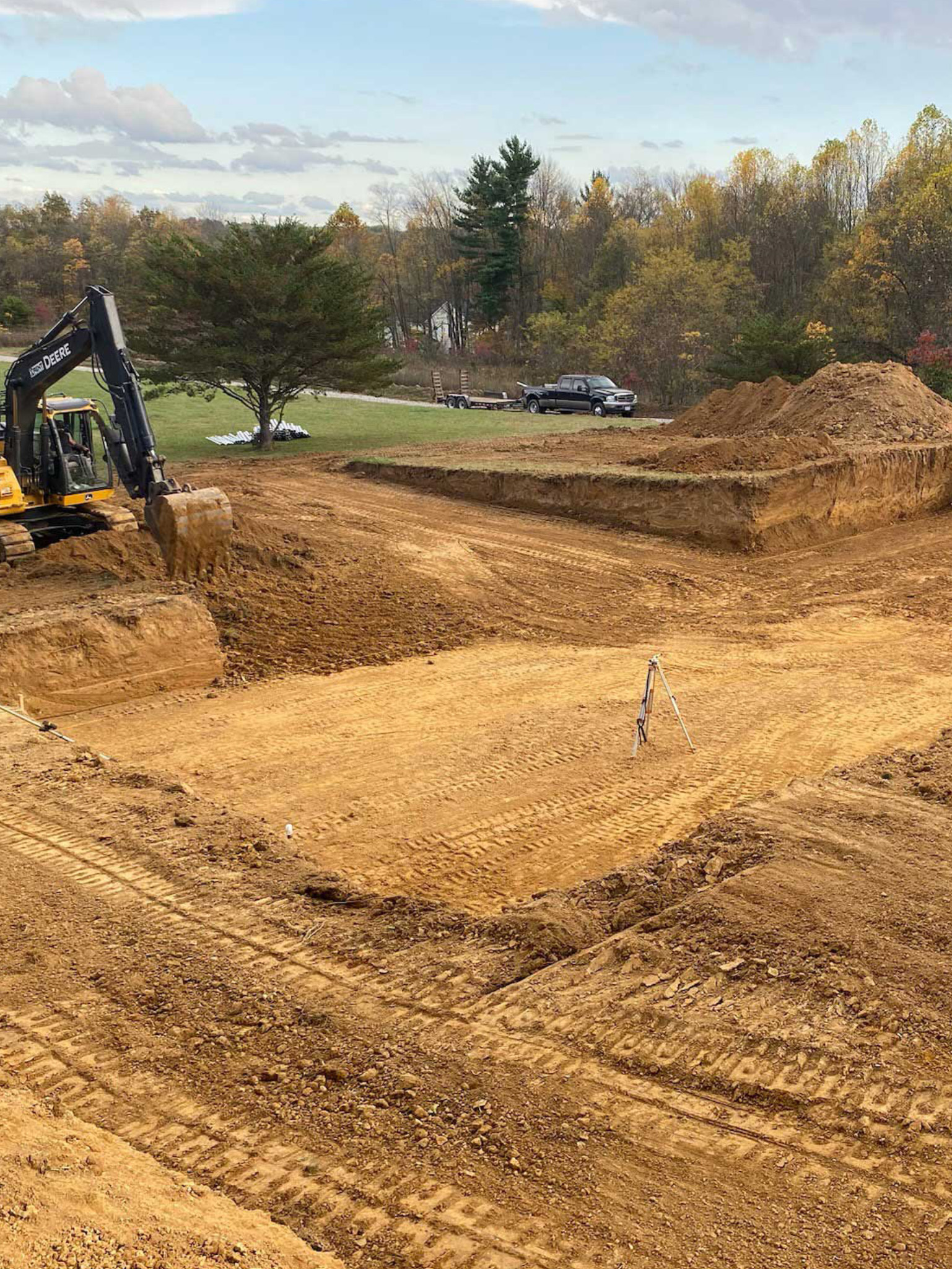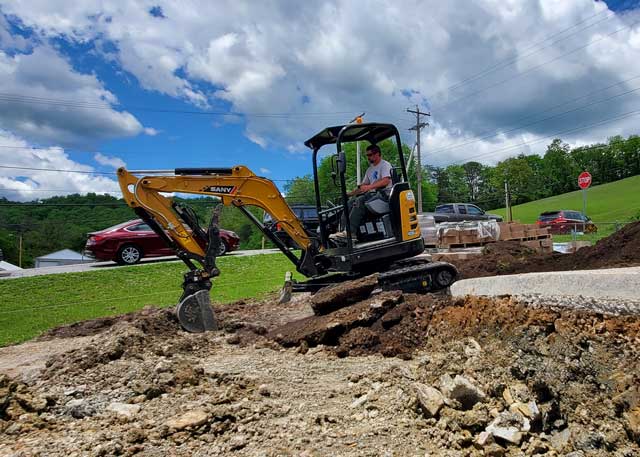Unveiling the Art of Excavation: Pro Tips for Safe and Productive Excavating
As dirt is turned and earth is relocated, the intricacies of excavation disclose themselves, requiring a keen understanding of equipment, dirt structure, safety methods, and ecological factors to consider. The expertise required to navigate these elements successfully can indicate the distinction in between an effective excavation task and a prospective catastrophe.
Value of Appropriate Equipment
To ensure the safety and security and efficiency of any kind of excavation project, utilizing the suitable devices is paramount. Excavation tasks vary in scope and complexity, varying from tiny household landscape design tasks to massive building tasks.
Excavators are essential pieces of machinery in any type of excavating operation. These flexible makers can be found in numerous dimensions to match different task needs. Tiny excavators are perfect for smaller jobs, while bigger excavators deal with extra substantial projects effectively. Backhoes are another vital equipment type, integrating the features of a loader and an excavator in one machine. They are important for tasks requiring versatility and ability to move.
Excavators excel in tasks that require pressing big quantities of dirt or debris. By investing in the suitable tools, excavation tasks can be completed safely, on time, and with accuracy.
Understanding Dirt Make-up
A detailed understanding of dirt composition is basic for performing excavation tasks with accuracy and safety. Comprehending the different types of soil is crucial as it directly influences excavation methods, equipment selection, and overall project efficiency. Soil structure typically is composed of 4 main elements: sand, silt, clay, and raw material. Each element has unique residential properties that influence just how dirt responds to excavation processes.
Sand particles are the biggest and offer excellent drain but offer little communication. Silt fragments are smaller sized than sand yet bigger than clay, offering modest drain and cohesion. Clay fragments are the smallest and provide high communication but poor drainage. Raw material, such as decaying plant product, impacts dirt fertility and stability.
Prior to commencing excavation, conducting soil examinations to identify its composition and features is necessary. This info aids in selecting the appropriate equipment, executing safety measures, and developing excavation approaches tailored to the specific soil problems - excavating ohio. By recognizing soil composition, excavation professionals can improve task outcomes while ensuring safety and adherence to finest methods
Precaution and Procedures
Understanding soil structure is the keystone whereupon safety and security procedures and methods for excavation tasks are constructed, making certain the well-being of workers and the success of the undertaking. There are a number of crucial measures that must be carried out to minimize dangers and prevent mishaps. when it comes to safety during excavation.
First and leading, prior to any digging starts, a complete assessment of the site should be performed to identify any possible threats such as below ground energies, unstable dirt conditions, or close-by frameworks that can position a threat. It is critical to have a skilled person supervise the excavation process to make certain that all safety procedures are followed strictly.
Moreover, all workers entailed in the excavation has to be appropriately educated in secure excavating methods and the correct operation of equipment. Personal safety tools (PPE) such as difficult hats, high exposure clothes, handwear covers, and safety and security boots need to be put on in all times to this hyperlink reduce the risk of injuries. lancaster trenching. Routine security conferences and tool kit talks must likewise be performed to maintain all employees educated about possible dangers and strengthen secure work techniques. By adhering to these precaution and methods, excavation jobs can be completed efficiently and without occurrence.
Reliable Excavation Planning
When starting an excavation project, careful preparation is important to guarantee effectiveness, security, and effective results. Reliable excavation planning entails several crucial actions that are vital for the smooth implementation of the task. The initial step is to perform a thorough website evaluation to determine any prospective threats, such as Our site below ground energies or unsteady dirt conditions. This information is important for creating a detailed excavation plan that includes safety and security steps and run the risk of reduction strategies.
As soon as the site evaluation is full, the next step is to develop a clear timeline and schedule for the excavation tasks. This includes figuring out the series of tasks, devices needs, and workforce allotment. Correct organizing helps prevent hold-ups and ensures that the job remains on track.

Moreover, communication among all team members is vital throughout the preparation stage. Clear instructions, routine updates, and effective control are crucial for an effective excavation project. By spending effort and time in meticulous preparation, excavation teams can substantially boost performance, decrease threats, and attain effective results.

Managing Ecological Considerations
With increasing focus on environmental sustainability in building and construction methods, managing ecological considerations has actually ended up being a vital aspect of excavation jobs. Excavation activities have the possible to impact the surrounding setting through dirt erosion, debris overflow, environment interruption, and contamination of water resources. To alleviate these threats, it is necessary to execute ideal methods that focus on environmental management.

Furthermore, proper waste management is essential to avoid soil and water contamination. Executing procedures for the disposal of dangerous materials, recycling of waste products, and minimizing making use of harmful chemicals can significantly decrease the environmental impact of excavation projects. By integrating these methods into excavation preparation and implementation, construction firms can ensure that their jobs are not just risk-free and efficient yet also ecologically accountable.
Conclusion
To conclude, understanding the art of excavation needs a detailed understanding of correct devices, soil make-up, security steps, and effective preparation. address By complying with these standards and taking into consideration environmental factors, excavations can be carried out safely and successfully. It is vital to prioritize safety and security and efficiency in every excavating job to ensure effective results.
As soil is transformed and earth is relocated, the complexities of excavation disclose themselves, demanding an eager understanding of devices, soil structure, security procedures, and ecological considerations.To make certain the safety and security and effectiveness of any excavation job, utilizing the proper equipment is extremely important.A thorough understanding of soil make-up is essential for executing excavation jobs with precision and security. Understanding the various types of soil is vital as it straight influences excavation techniques, equipment choice, and total project effectiveness. By recognizing dirt composition, excavation experts can boost project outcomes while making sure safety and security and adherence to best methods.